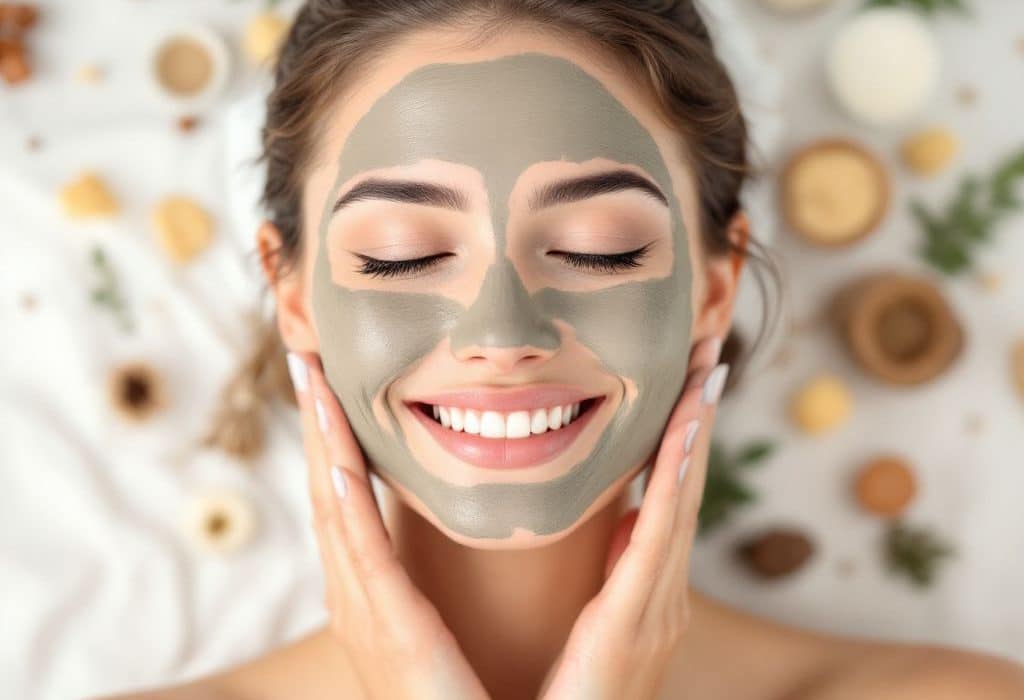You know that feeling when you want to treat yourself to a little home spa day but aren’t quite sure if you’re getting the whole process right? Maybe you’ve tried a clay mask or two, ended up with a mess, and thought, “Is this really doing anything for my skin?” If you’ve ever wondered if there’s a sweet spot for applying that clay mask for maximum glow potential, you’re in the right place. Let’s dive into the wonderfully simple world of clay masks and see how you can make it a starring role in your natural skin care routine.
Why Choose Clay Masks in Natural Skin Care?
Before we jump into the how-to, let’s chat about the *why*. What makes clay masks the poster child for natural skin care? It’s all about going back to basics with minerals that come straight from the earth. Trust me, your skin will thank you for it.
Clay masks are celebrated for their ability to absorb excess oils. They do a fantastic job at drawing out impurities from the skin, making them the go-to remedy for acne-prone skin. And let’s not forget their power to give your skin that refreshed feel. So, whether it’s bentonite, kaolin, or French green clay – each brings its unique benefits to the natural skin care table.
Different Types of Clay Masks
Now, there’s no one-size-fits-all when it comes to clay masks, and thank goodness for that. Here’s a quick breakdown:
- Bentonite Clay: Great for oily and acne-prone skin. It’s super absorbent and draws out oil and impurities.
- Kaolin Clay: A gentler option that’s great for sensitive skin types. It’s mildly exfoliating and promotes circulation.
- French Green Clay: Known for its rich mineral content, it works well on oily skin, tightening pores and improving texture.
Each type of clay comes with its own set of targets, so choosing based on what your skin needs is key. But how do you make the most of these? Let me walk you through it.
Clay Mask Application: Your Step-by-Step Guide

Step 1: Prep Your Canvas
Before your clay mask ever touches your skin, you need a clean surface. Start by washing your face with a gentle cleanser to remove any surface impurities. Haven’t we all reapplied makeup over a shiny mess and regretted it? The cleaner the slate, the better the clay will work its magic.
Tip: Use Lukewarm Water
Go easy on the water temperature. Lukewarm is your best bet during this ritual to avoid stripping your skin’s natural oils. Hot water can exaggerate dryness and redness.
Step 2: Mixing the Mask
Now here comes the fun and, honestly, therapeutic part. Most clay masks are powders, and guess what? You’re in control of the ingredients! Whether you want to mix your clay with water, apple cider vinegar, or a bit of both is your call. Just get that consistency to a whipped cream-like state.
Recipe Ideas:
- Bentonite Mask: Mix with apple cider vinegar for added astringent benefits.
- Kaolin Mask: Blend with rose water for a toning, moisturizing boost.
Step 3: Application Time
Dip a clean brush or your fingers into the mix—whichever feels right for you. Start applying from the center of your face outward, using upward strokes. Think of yourself as crafting a masterpiece. Keep it even and try to avoid layering too thickly. You want coverage, not suffocation.
Key Reminder: Avoid the Delicate Zone
Always steer clear of the eye area. The skin around your eyes is delicate and doesn’t need the drying effect a clay mask can have.

Step 4: Let It Sit
Now, this is where a lot of folks hit a snag. How long should you leave that mask on? Ignore any urge to let it dry to an uncomfy crackle. About 10-15 minutes should do the trick, or until it’s just starting to dry at the edges. Any longer and you might strip away too much moisture.
Step 5: Rinse and Reveal
Time to take it off? Use a washcloth dampened with lukewarm water to gently wipe off the mask. Rinse your face thoroughly to connect with those newly gunk-free pores.
Word of Wisdom: No Scrubbing
Be gentle. Scrubbing off a clay mask can irritate the skin. Pat your face dry with a soft towel afterward.
Step 6: Seal the Deal with Natural Moisture
Here’s where we lock in all that hard-earned goodness with your favorite natural moisturizer. Think of this step as wrapping your skin in a nourishing hug to prevent any post-mask dryness.
Pro-Level Enhancements and Common Mistakes to Avoid
Enhance Your Experience
- Aromatherapy: Add essential oils like lavender or tea tree to the mix for an aromatherapeutic spa-like feel right at home.
- Hydration Boost: After rinsing, a spritz of hydrating facial mist keeps everything fresh.
Mistakes Most People Make…and How to Dodge Them

- Thinking Longer Is Better: Letting it sit too long does more harm than good.
- Over-Masking: More isn’t really more in this case. Stick to once or twice a week, depending on how oily or sensitive your skin is.
- Forgetting to Moisturize: Not giving your skin back its moisture right after? Big no-no.
Frequently Asked Questions
Can all skin types use clay masks in their natural skin care routine?
Yes, but you’ll want to select the type of clay suitable for your specific skin type. For sensitive skin, go gentle with kaolin.
What’s the best complementary skin care practice to use with clay masks?
Double down on hydration! Invest in a great natural moisturizer and a hydrating serum.
Should I wash my face before or after a clay mask if I have dry skin?
Always cleanse your skin before applying a mask. Post-mask, your focus should be on immediately hydrating your skin.
Final Thoughts
A clay mask routine can be like your skin’s best friend if treated right. It’s that gift of nature you can tap into whenever you feel like giving your skin some extra care. Remember, the real magic lies in sticking with what feels good for your skin, and not everybody else’s routine. By tweaking these steps to suit your unique skin texture and concerns, you harness the power of one of the oldest natural skin care secrets.
So why not start carving out a cozy little spot in your week for a clay mask ritual? Your skin—and spirit—just might give you a hearty high five for it.
Frequently Asked Questions
What are the benefits of using natural ingredients in skin care?
Using natural ingredients in skin care offers several benefits, including hydration, protection from environmental stressors, and anti-inflammatory properties. Natural skincare products are free from harmful chemicals and parabens, making them gentler and less irritating, especially for sensitive skin. They also have a low environmental impact as they are biodegradable and do not contain synthetic additives[1][5].
Which natural ingredients are effective for skin care?
Several natural ingredients are highly effective for skin care. Aloe vera is renowned for its soothing and anti-aging properties, helping to calm irritated skin and promote collagen production. Honey is a natural antioxidant that locks in moisture and fights free radicals, while shea butter provides exceptional hydration and protects the skin barrier. Tea tree oil is known for its anti-inflammatory and antiseptic properties, making it effective against acne and other skin imperfections[3][5].
How do natural skincare products differ from synthetic ones?
Natural skincare products differ from synthetic ones in that they are sourced from plant-based materials and are minimally processed. They are rich in vitamins, antioxidants, and other beneficial compounds that nourish and protect the skin. Unlike synthetic products, natural skincare ingredients are gentler, less irritating, and have a lower environmental impact[1][5].
Are natural skincare products suitable for all skin types, including sensitive skin?
Yes, natural skincare products are generally suitable for all skin types, including sensitive skin. They are less likely to cause skin irritation because they do not contain harmful chemicals, artificial colors, or other by-products. Natural ingredients like aloe vera, coconut oil, and shea butter are soothing and nourishing, making them ideal for sensitive skin[1][5].
References- 100 Percent Pure. (n.d.). From the Earth to Your Skin: How Natural Ingredients Can Help You.
- Shop Good. (2025). 7 Ingredients in Natural Beauty Products with Amazing Benefits.
- Learn Canyon. (2023). The Benefits Of Using Natural Products.


